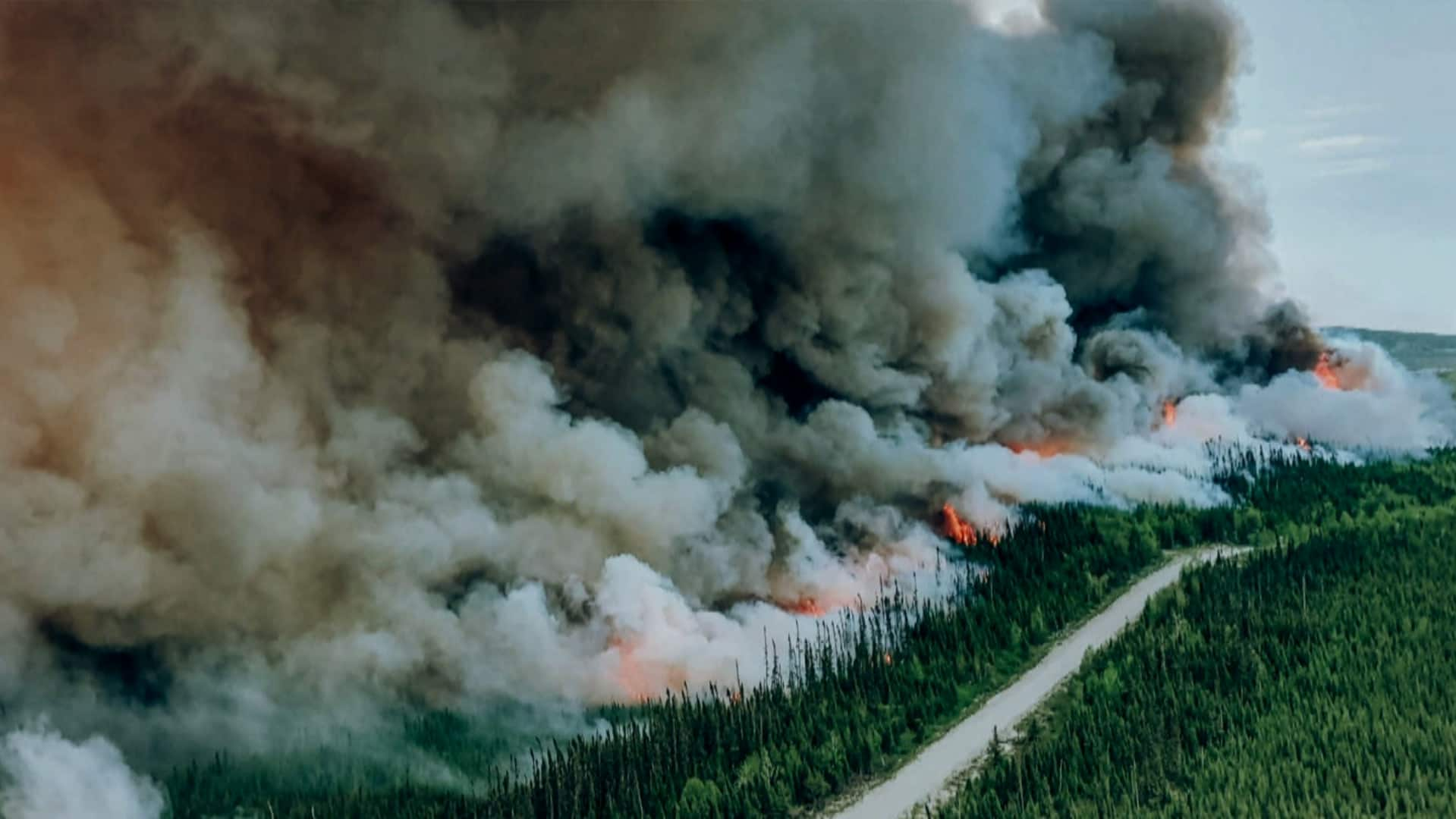At the end of November, there were 28 out-of-control wildfires burning in B.C.’s parched north, despite snow on the ground and freezing temperatures.
The province’s worst wildfire season on record in terms of area burned was recorded in 2023, a destructive season that stretched from early spring all the way into fall, and now winter.
Now, the B.C. Wildfire Service (BCWS) says it’s stepping up preparations ahead of the spring to deal with holdover fires — colloquially called “zombie fires” that lay dormant under the ground before re-igniting in hotter conditions.
Fire officials say the devastating drought upending life for many in B.C. will be a major factor in preparations, especially in the northern half of the province where precipitation is scarce.
Pedro Roldan-Delgado, a fire information officer for the Prince George Fire Centre, says holdover fires tend to penetrate deep into the root systems of trees.
“When the ground freezes, it doesn’t allow any moisture to penetrate deep down into those areas where the fire could still be heating up and burning,” he said.
“If we do not get any kind of moisture before the ground freezes or the snow falls, we will have a good chance of holdover fire.”
Roldan-Delgado says the fire service will largely let cooler temperatures and snow help put out ongoing fires this winter, and that active suppression is often not the first choice given many contracted firefighters have returned to university.
However, he said monitoring and surveillance activities will continue throughout the winter and early spring, including the use of infrared scanning and satellite imagery to detect hotspots.
“Even like just a quick helicopter flight — just flying over, seeing if we see any smoke up in the sky,” he said. “You can get a bit more of a sense around the fire from being up in a helicopter.”
Pile burns and prescribed burns
Pete Laing, superintendent of fuel management for the BCWS, said giant fires in the north will require careful fuel management and monitoring to ensure resources are on hand if and when they spark again.
That includes B.C.’s biggest fire on record, Donnie Creek, currently considered under control by the wildfire service.
Canada’s record-breaking wildfire season is pumping more CO2 into the atmosphere than all other emission sources in the country combined. CBC’s international climate correspondent Susan Ormistion goes deep into the Boreal forest for a first-hand look at the impact on the climate crisis.
Laing says fuel management, which involves dealing with forest vegetation ahead of time to reduce the accumulation of potential fuels, will be a major part of the BCWS’ preparations this winter.
One of the biggest parts of fuel management is pile burns — when wildfire fighters collect debris and prune trees close to homes, pile that material together, and burn them.
“We call those ‘ladder fuels,’ cleaning them up so that fire cannot move from the ground up into the forest canopy,” Laing said. “[That’s] when it becomes quite dangerous, volatile.”
He says the BCWS is planning pile burns across various communities this winter, which he estimates could take several months.
The burns are scheduled to start on November 20, 2023, and will be concluded by April 30, 2024. Smoke may be visible in the surrounding area, including Naramata, <a href=”https://twitter.com/hashtag/Penticton?src=hash&ref_src=twsrc%5Etfw”>#Penticton</a> and <a href=”https://twitter.com/hashtag/Summerland?src=hash&ref_src=twsrc%5Etfw”>#Summerland</a>.
—@BCGovFireInfo
He says pile burns can only be performed when atmospheric conditions are right, so communities are not dealing with smoke all winter long and fire does not accidentally spread in the wind.
“That is the challenge that we face when we’re burning — we cannot burn on every single day,” he said. “That’s why those timelines, that you see referenced, are dragging out into the new year and even into spring of the new year.”

Another tactic is prescribed burns, when firefighters use low-intensity burns over a large ground area and remove hazardous fuel from the forest.
Laing says fire is a natural part of the ecosystem in B.C., and prescribed burns should be done more often to restore the environment to its natural state.
He says prescribed burns can sometimes be done over an area of a few hundred hectares — which can be alarming for some residents.
“It’s going to be a balance moving forward as we put more fire into the landscape,” the official said. “How we balance that with the community is going to be challenging … as we get folks used to seeing fire on the landscape again.
“There’s really negative connotations associated with fire on the landscape. And so we need to work with the public, educate the public, to help them understand the difference between good fire and bad fire.”
Laing says the BCWS is actively working with local governments, industries, non-governmental organizations and First Nations on prescribed burns and cultural burns, and welcomes any more organizations that want to be proactive with fuel management.
He says he hopes the ongoing work, which also includes education for homeowners on how to “firesmart” their home, will lead to better capacity and strength in the province come the next wildfire season.

